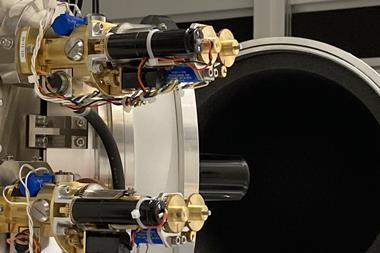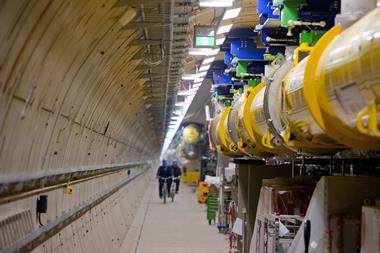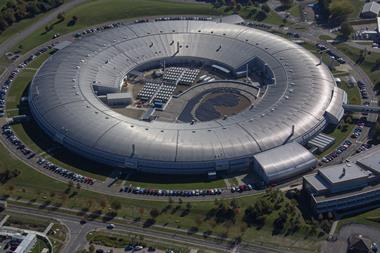The upgrade of the Diamond Light Source synchrotron in Oxfordshire is to receive a funding boost of over £500 million from the UK government and Wellcome Trust.
The announcement was made on 6 September by science and technology secretary, Michelle Donelan, during a visit to Diamond which is based at the Science and Technology Facilities Council (STFC) Rutherford Appleton Laboratory.
The £519 million funding injection will go towards the Diamond-II upgrade which is expected to conclude in 2030 and will involve construction of a new, brighter synchrotron with three new flagship beamlines and critical beamline upgrades with a comprehensive series of upgrades to optics, detectors, sample environments, sample delivery capabilities and computing.
The upgrade to a fourth-generation synchrotron will include an 18-month ‘dark period’ where the facility is offline, followed by a bedding in period as the facility is relaunched.
The funding will be added to £81.5 million of investment from UK Research and Innovation (UKRI), announced last year for the Diamond-II upgrade project.
‘Our national synchrotron may fly under the radar as we go about our daily lives, but it has been crucial to some of the most defining discoveries in recent history – from kickstarting Covid drug development that allowed us to protect millions to advancing treatment for HIV,’ said Donelan. ‘Our investment will ensure one of the most pioneering scientific facilities in the world continues to advance discoveries that transform our health and prosperity, while creating jobs, growing the UK economy and ensuring our country remains a scientific powerhouse.’
Mark Thomson, executive chair of the STFC and UKRI champion for infrastructure, said it was essential that the UK invested in world-class research infrastructure that provide researchers with the necessary tools to work ‘at the cutting edge’.
‘This investment in Diamond-II will play a crucial role in cementing the UK’s place as a science superpower and provide our talented researchers and innovators with the best opportunities to make major breakthroughs across a wide range of disciplines from structural biology to advanced materials and battery technologies.’
Adam Kirrander, a chemical physicist at the University of Oxford, told Chemistry World it was ‘fantastic’ Diamond would be joining the ranks of fourth generation synchrotrons. ‘This will ensure that Diamond remains a cutting-edge facility, with the synchrotron driving a broad range of science from biomedical research to materials. The significant increase in x-ray brilliance and coherence is helpful for exciting new techniques such as coherent diffractive x-ray imaging. I am also happy to see this major investment in the Harwell campus, which plays a key role in UK science.’
Correction: On 13 September 2023 the number of new beamlines planned was updated – three not five are currently set to be constructed.

















No comments yet